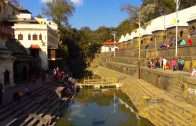Koh Samui
Abundant tourist resources, sandy beaches, coral reefs, and coconut trees are to be found on Koh Samui, the second-largest island (after Phuket) in Thailand off the east coast of the Kra Isthmus, in the Chumphon Archipelago.
The island was probably first inhabited about 15 centuries ago, settled by fishermen from the Malay Peninsula and southern China. It appears on Chinese maps dating back to 1687, under the name Pulo Cornam.
Until the late 20th century, Samui was an isolated, self-sufficient community, having little connection with the mainland of Thailand. The island was even without roads until the early 1970s, and the 15 km journey from one side of the island to the other involved a whole-day trek through the mountainous central jungles.
In the early 1970s, the first backpackers travelling on the back of a coconut boat arrived on Koh Samui. For years after that, the island had just a few bungalows and a trickle of tourists. Things started to change in the early 1990s when tourists started arriving on full boats and since then the place has grown substantially.
Ko Samui may not be the country’s most beautiful island, but it is still an oasis of natural beauty with its white sandy beaches, dazzling coral, luscious lagoons, picturesque waterfalls, swaying coconut trees and crystal clear water.






